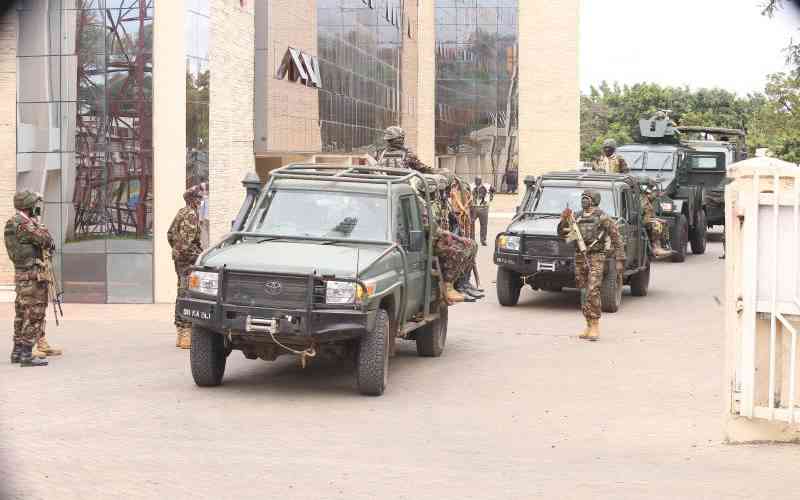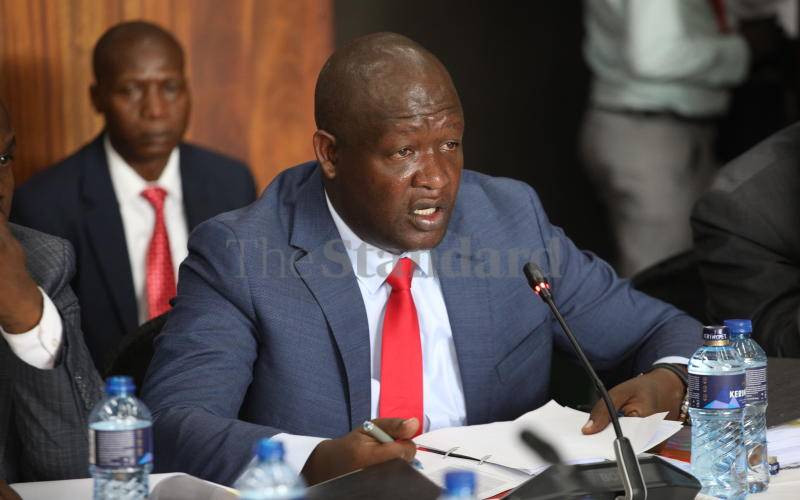
Again, Kenya has been jolted by the April 18 helicopter crash at Sindar village in the North Rift that snatched the life of the Chief of Defence Forces, Gen Francis Ogola, and nine Kenya Defence Force (KDF) solders. This is the latest painful instalment to an endless raft of airborne disasters that have stitched an indelible batch of odium and dishonour onto KDF’s aviation.
The trouble with KDF’s aviation is threefold: donations of derelict frames, maintenance challenges and procurement mess.
The fleet of Bell UH-1H Huey helicopters, one of which claimed the KDF soldiers, was donated by the United States. Donors habitually offload old and outdated stockpiles with short shelf-life. This is why Kenya’s overreliance on such rickety equipment has become the death knell of our military aviation.
The Hueys in KDF’s inventory are over 60 years old and are bereft of terrain mapping and navigational suite, phased radar, night vision infrared sensors, secure communication, pressurised cabins, first aid kits and firefighting equipment. This contrasts sharply with the Hueys in the US inventory, which are new, hardy, maneuverable and with the enviable capability to fly both at night and in treacherous weather.
Kenya has also received assorted donations from other friendly countries such as Jordan and the United Arab Emirates. All these types of donated helicopters have invariably plied the familiar path of KDF’s customary accidents.
Kenya has uncannily perfected the nefarious art of procuring junk equipment. From Jordan, KDF acquired 15 decrepit F-5 jets in 2009 at a cost of US$23 million. Thankfully, none of these birds have ever flown; rather, they were swiftly cannibalised as spares for the ageing F-5Es. Why are we operating 50-year old frames, when Uganda and Ethiopia have fourth generation jets?
The reputed Stockholm-based international institute, SIPRI, as well as the revered Janes Defence Journal, have repeatedly used unsavoury terms such as junk assets, unserviceable frames, and ancient fleet to describe KDF’s aviation.
With a healthy annual budget of US$1.4 billion, it is hard to understand why Kenya has this incestuous obsession with death-trap contraptions. The yearly recurrent budget for the military – covering salaries, allowances, training, maintenance and incidentals – hardly exceeds 800 million dollars. Which means that KDF has a surplus budget of 600 million dollars from which it can effortlessly acquire new equipment. Such a vault of resources can secure several squadrons of the latest top-drawer frames. So, whither goes the huge budget appropriated for new equipment?
And instead of buying mint new equipment, KDF habitually sends junk engines to the US, Europe or South Africa for overhaul. The cost of overhauling the obsolete aerial machines sometimes surpasses the price of new ones. Why overhaul the engine of a Puma in South Africa or that of an F-5 in the US or the one for the MiL-17 in Ukraine, when we can purchase reliable brand new frames?
The preference for stripped-down export variants is another grave malady afflicting the military. It is a devious acquisition of a third-rate equipment at the exact price of the brand new one. How the difference is shared between the contracting parties remains heavily guarded information. A Harbin Y-12 acquired in this nefarious manner from China crashed in Marsabit in 2006, ending the lives of national leaders on a peace mission.
It appears the endless cycle of air tragedies has not pricked our conscience. How many of these crashes must we endure before something concrete is done? Recently, Kimani Ichungwa, the leader of the majority in the national assembly, mentioned the need to increase the military budget so as to address these worrying gaps. I hope this was not hot air. Perhaps, the painful demise of Gen Ogola will goad KDF to stock new, high-quality, serviceable and durable equipment. And how safe is the presidential chopper?
Dr Osaaji is a lecturer at the University of Nairobi
 The Standard Group Plc is a
multi-media organization with investments in media platforms spanning newspaper
print operations, television, radio broadcasting, digital and online services. The
Standard Group is recognized as a leading multi-media house in Kenya with a key
influence in matters of national and international interest.
The Standard Group Plc is a
multi-media organization with investments in media platforms spanning newspaper
print operations, television, radio broadcasting, digital and online services. The
Standard Group is recognized as a leading multi-media house in Kenya with a key
influence in matters of national and international interest.
 The Standard Group Plc is a
multi-media organization with investments in media platforms spanning newspaper
print operations, television, radio broadcasting, digital and online services. The
Standard Group is recognized as a leading multi-media house in Kenya with a key
influence in matters of national and international interest.
The Standard Group Plc is a
multi-media organization with investments in media platforms spanning newspaper
print operations, television, radio broadcasting, digital and online services. The
Standard Group is recognized as a leading multi-media house in Kenya with a key
influence in matters of national and international interest.









